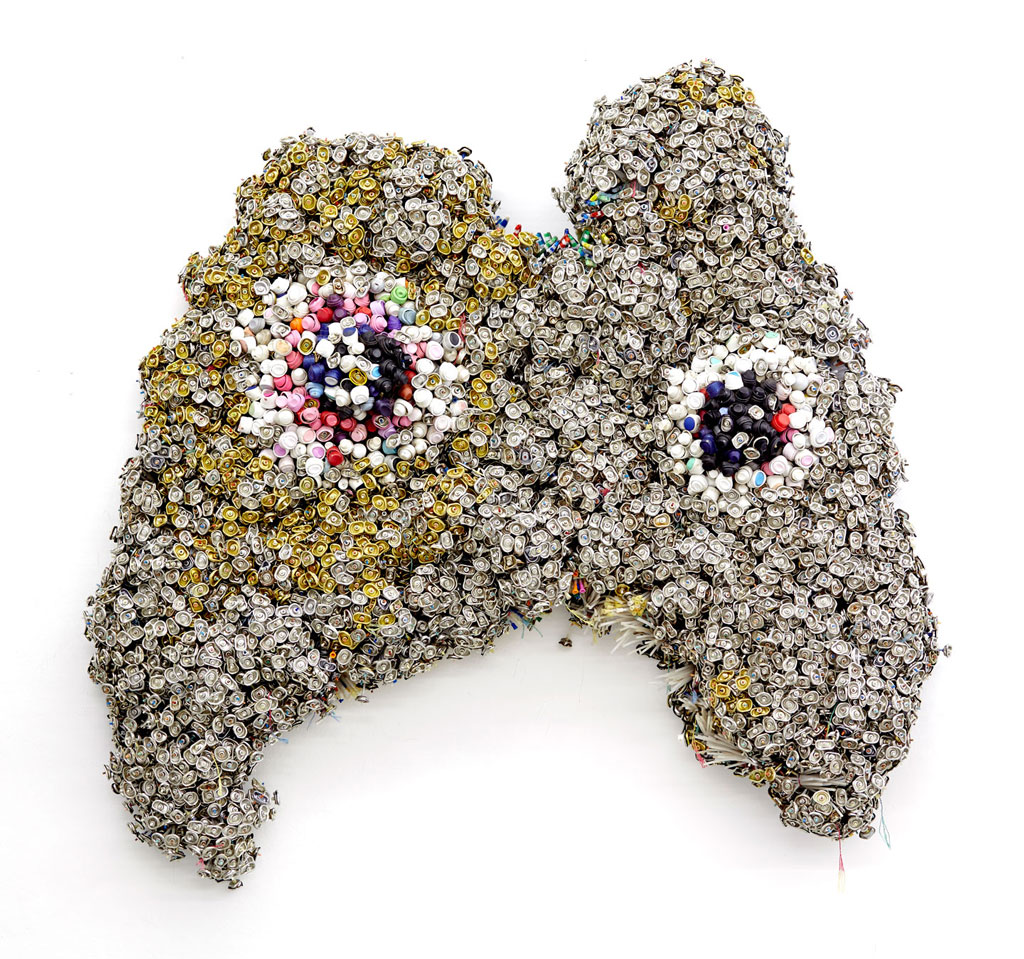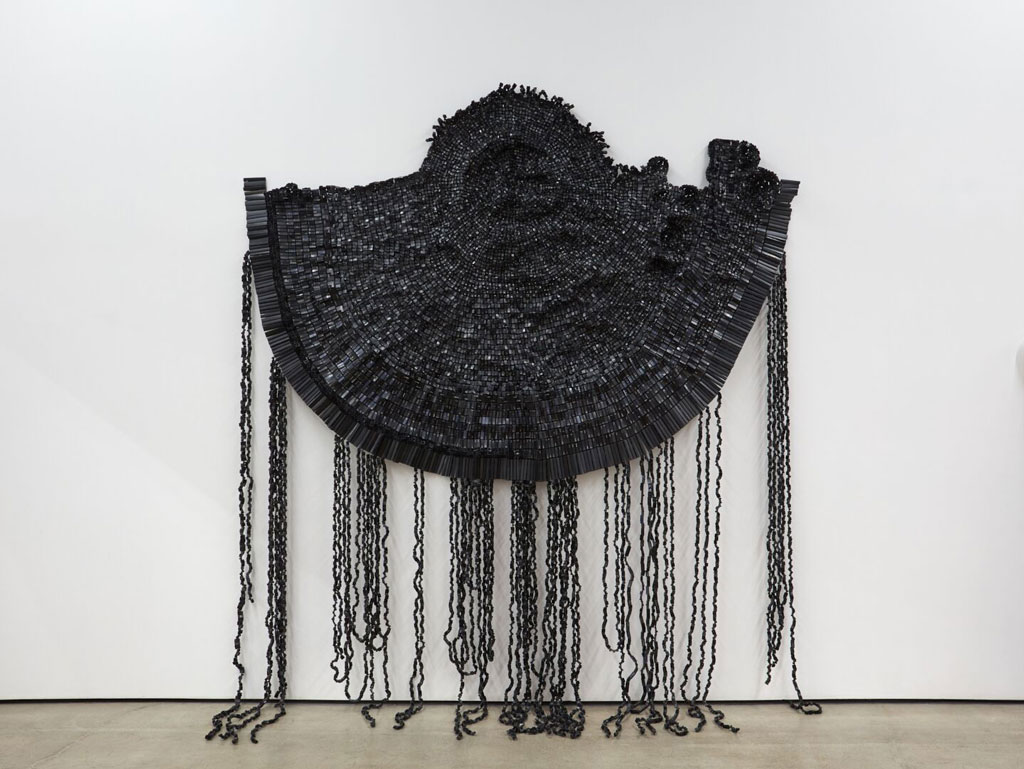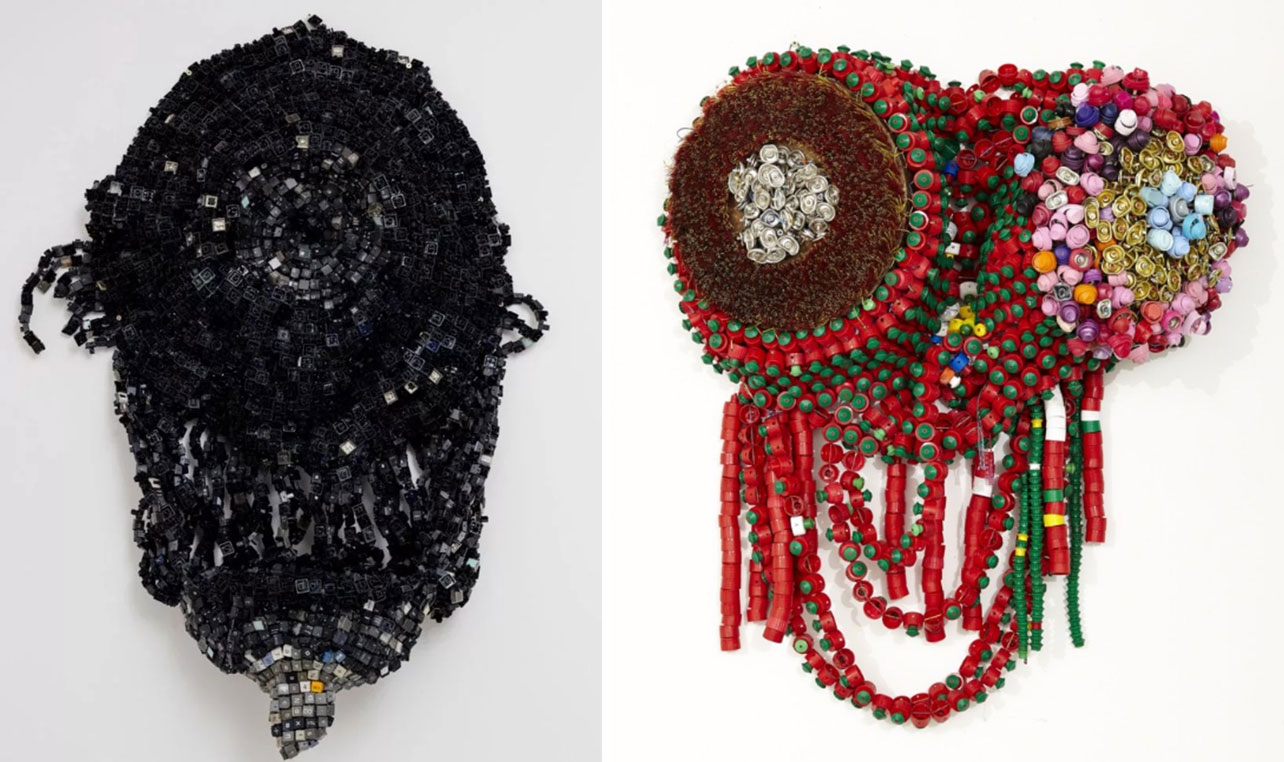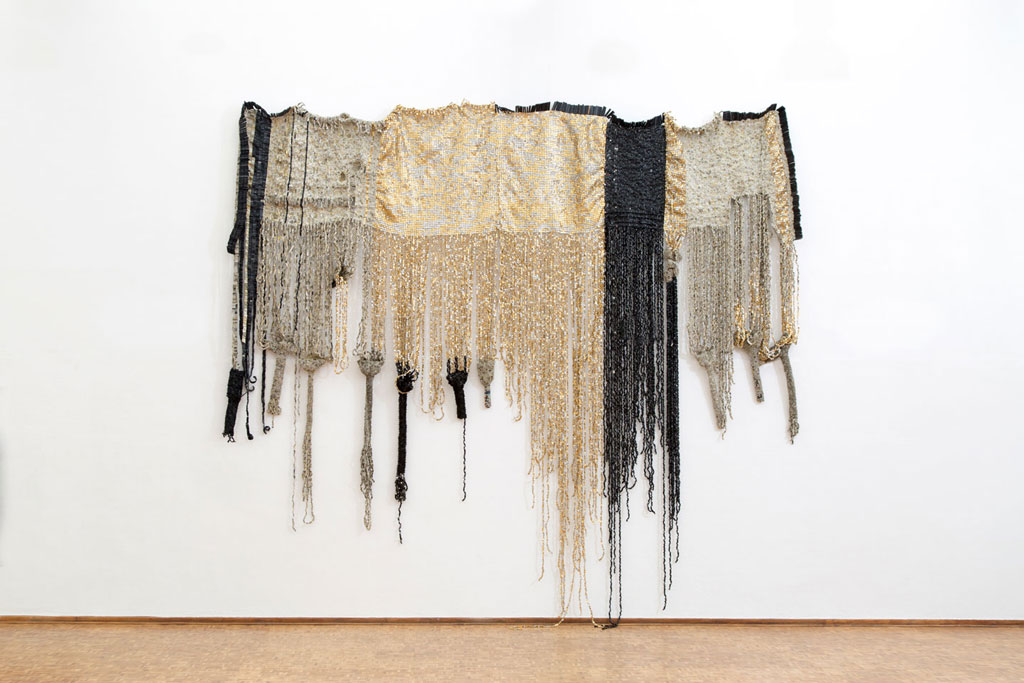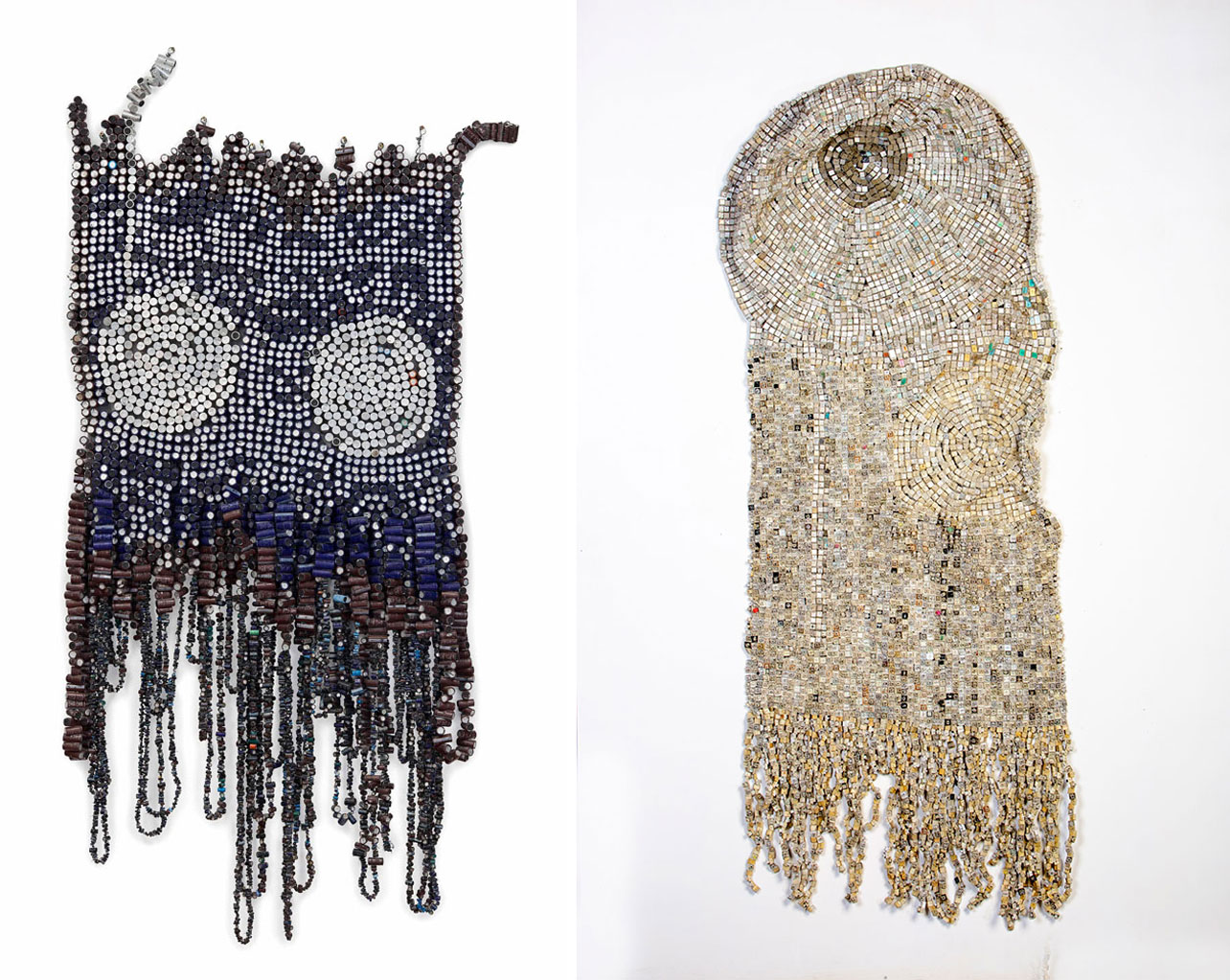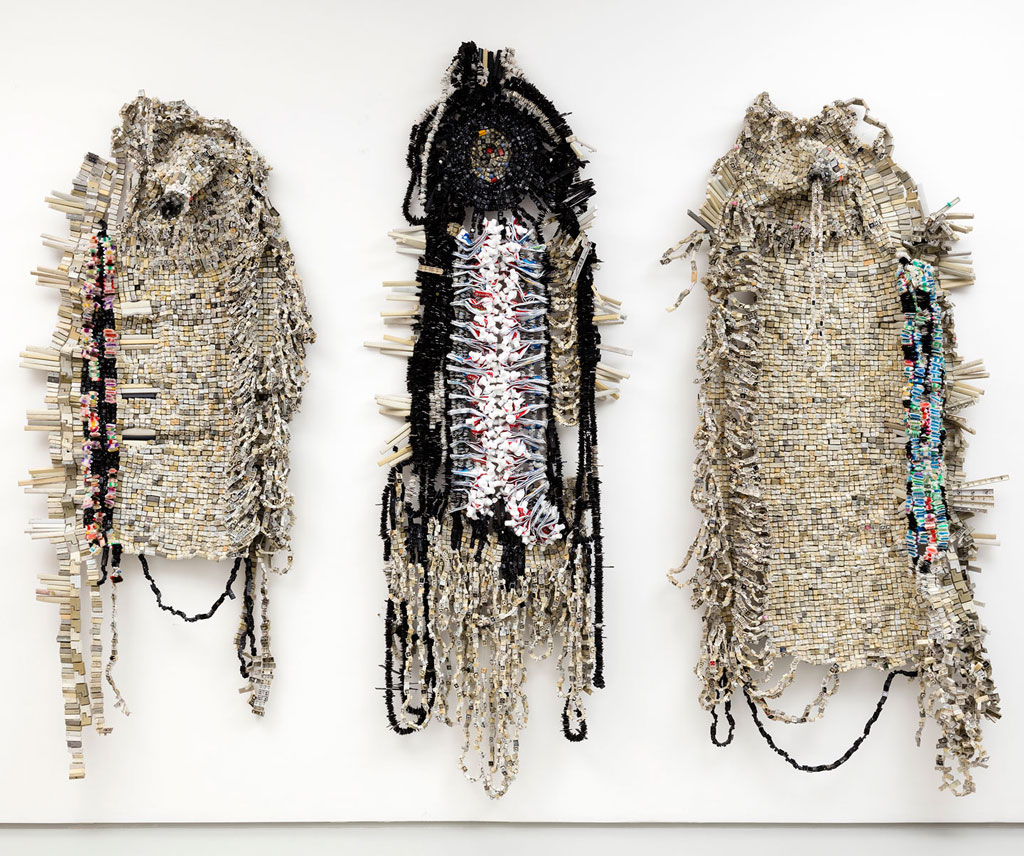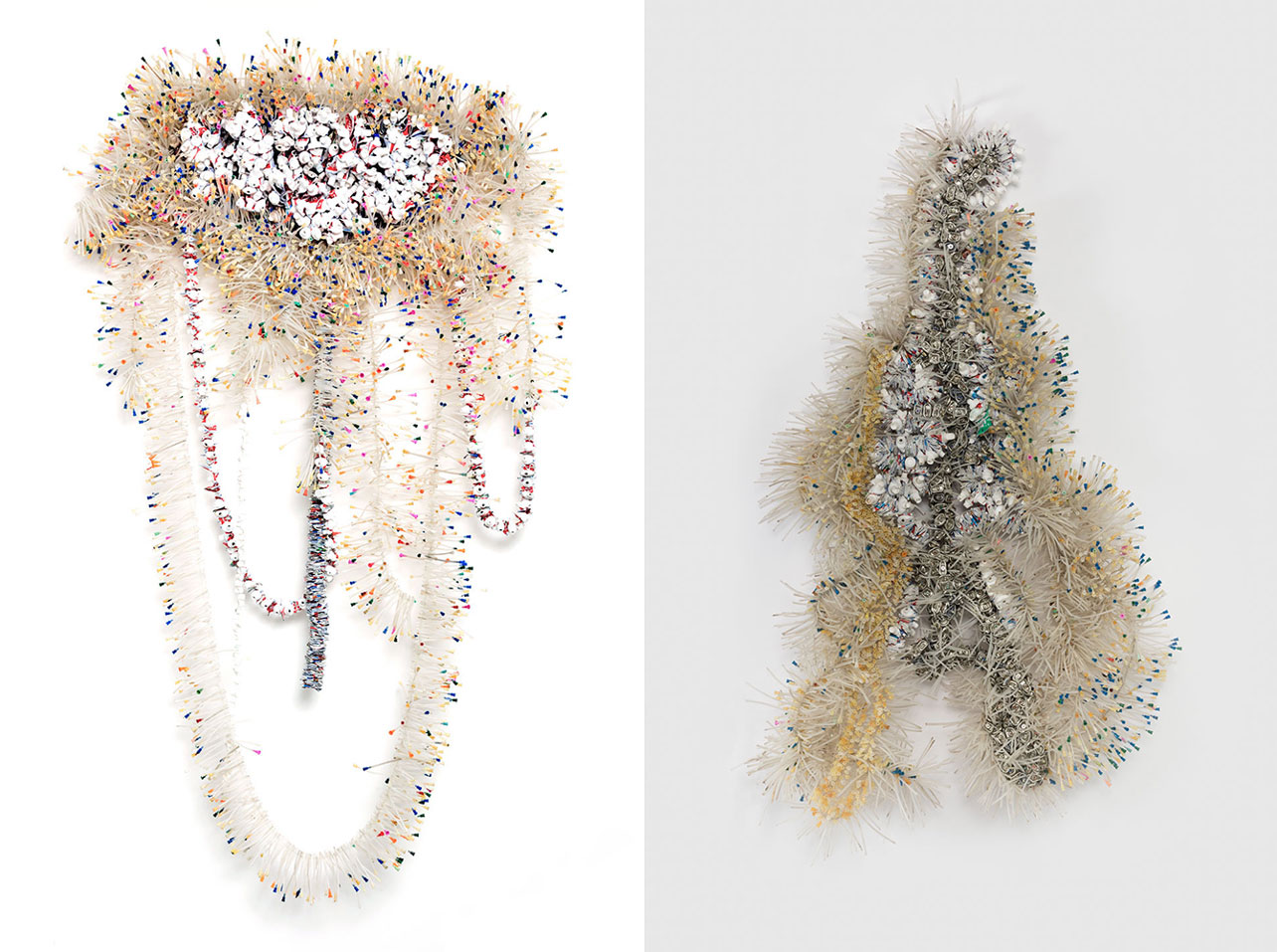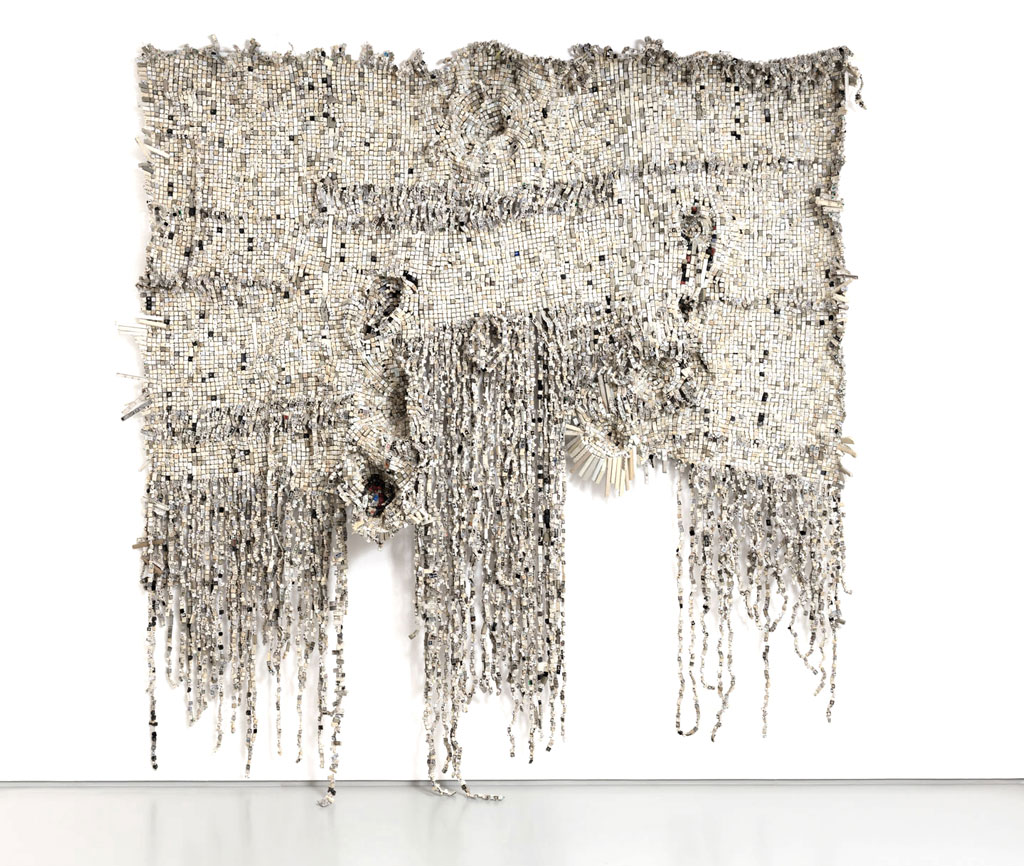ART-TRIBUTE:Weaving and other Practices… Moffat Takadiwa
 We continue our Tribute with the Zimbabwean artist Moffat Takadiwa (1983- ), he is known for his striking wall sculptures and installations painstakingly created from things he finds lying around, including spray-can canisters, perfume bottles, dishwasher tops and toothpaste tubes. Moffat Takadiwa has consistently devoted his work to critical explorations of how material, environmental, and social factors impact the reality of contemporary Zimbabwean daily life.
We continue our Tribute with the Zimbabwean artist Moffat Takadiwa (1983- ), he is known for his striking wall sculptures and installations painstakingly created from things he finds lying around, including spray-can canisters, perfume bottles, dishwasher tops and toothpaste tubes. Moffat Takadiwa has consistently devoted his work to critical explorations of how material, environmental, and social factors impact the reality of contemporary Zimbabwean daily life.
By Dimitris Lempesis
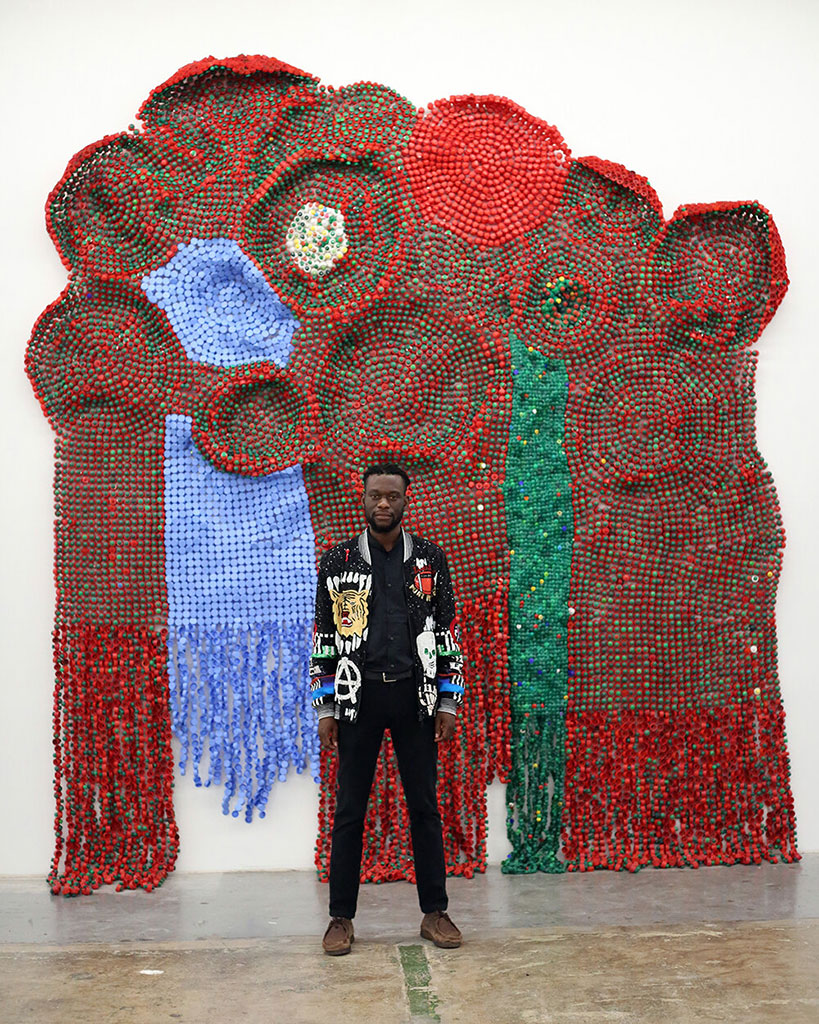 Born in 1983 in Karoi, Takadiwa graduated with a BA Honors from Harare Polytechnic College in 2008, he lives and works in Harare, Zimbabwe in the neighborhood of Mbare, one of the biggest hotspots for the recycling and repurposing microeconomy in the country. Working with local upcoming young artists and young creatives, Takadiwa aims to create the world’s first arts district made of reused and repurposed materials. Takadiwa reassesses his own Korekore craft culture through the appropriation of garbage from the West, elevating found objects into sculptural forms that engage with issues of cultural identity, language, social practice, and the environment. All of his artworks are composed from the discarded remains of consumer waste, woven together in the language of traditional Zimbabwean textiles. Macrobiotic in his approach to material, his repurposed objects tell stories of each piece’s past lives to viewers brave enough to confront their own ecological and colonial legacies. Throughout recent decades, Zimbabwe’s government has been in a state of constant flux, not so much democratically self-ruled as dominated by corrupt officials eager to sell the country’s natural, historical, and spiritual resources to the highest bidder. Corporate and geostrategic interests from China, Russia, Britain, and the U.S. prey upon political unrest. A collapsed economy precludes any opportunity for students in Zimbabwe to acquire new art supplies, so the country’s boundless landfills became Takadiwa’s muse. His work draws attention not only to the problems of waste management and global consumption patterns, it actively encourages us to question our daily activities. Takadiwa’s wall-mounted golems are brought to life from the discarded toothbrushes, keyboards, aerosol lids, and vaccine bottles of Los Angeles, New York, Chicago, and other industrialized cities reincarnate. He considers his impossible tapestries a sort of post-colonial African Dada; the strands of keyboard pads and plastic bits spiral in allegorical urinals within the work. The oft-romanticized abundance of natural resources in Africa remains a Eurocentric mythology. Western waste allows past colonizers to repopulate the lands of their former settlements with trash as a stand-in. For Takadiwa, the polluted lands in his country are as problematic as the detriments of colonial power. With works like “The Land of Coca-Cola and Colgate”, he not only seeks to raise environmental concerns, but to metaphorically highlight the Zimbabwean experience as a culmination of residual complications left behind by imperial British rule. The strong link between land ownership and the language of refuse is a driving force in his new body of work. Land reappropriation, a key pillar of the African Liberation Movement, plays a major role in Zimbabwe’s contemporary political agenda, with issues of ownership, control, distribution, access, and displacement not adequately addressed by the post-colonial regime. Disputes over the control of property have often occurred between and within states on the continent.
Born in 1983 in Karoi, Takadiwa graduated with a BA Honors from Harare Polytechnic College in 2008, he lives and works in Harare, Zimbabwe in the neighborhood of Mbare, one of the biggest hotspots for the recycling and repurposing microeconomy in the country. Working with local upcoming young artists and young creatives, Takadiwa aims to create the world’s first arts district made of reused and repurposed materials. Takadiwa reassesses his own Korekore craft culture through the appropriation of garbage from the West, elevating found objects into sculptural forms that engage with issues of cultural identity, language, social practice, and the environment. All of his artworks are composed from the discarded remains of consumer waste, woven together in the language of traditional Zimbabwean textiles. Macrobiotic in his approach to material, his repurposed objects tell stories of each piece’s past lives to viewers brave enough to confront their own ecological and colonial legacies. Throughout recent decades, Zimbabwe’s government has been in a state of constant flux, not so much democratically self-ruled as dominated by corrupt officials eager to sell the country’s natural, historical, and spiritual resources to the highest bidder. Corporate and geostrategic interests from China, Russia, Britain, and the U.S. prey upon political unrest. A collapsed economy precludes any opportunity for students in Zimbabwe to acquire new art supplies, so the country’s boundless landfills became Takadiwa’s muse. His work draws attention not only to the problems of waste management and global consumption patterns, it actively encourages us to question our daily activities. Takadiwa’s wall-mounted golems are brought to life from the discarded toothbrushes, keyboards, aerosol lids, and vaccine bottles of Los Angeles, New York, Chicago, and other industrialized cities reincarnate. He considers his impossible tapestries a sort of post-colonial African Dada; the strands of keyboard pads and plastic bits spiral in allegorical urinals within the work. The oft-romanticized abundance of natural resources in Africa remains a Eurocentric mythology. Western waste allows past colonizers to repopulate the lands of their former settlements with trash as a stand-in. For Takadiwa, the polluted lands in his country are as problematic as the detriments of colonial power. With works like “The Land of Coca-Cola and Colgate”, he not only seeks to raise environmental concerns, but to metaphorically highlight the Zimbabwean experience as a culmination of residual complications left behind by imperial British rule. The strong link between land ownership and the language of refuse is a driving force in his new body of work. Land reappropriation, a key pillar of the African Liberation Movement, plays a major role in Zimbabwe’s contemporary political agenda, with issues of ownership, control, distribution, access, and displacement not adequately addressed by the post-colonial regime. Disputes over the control of property have often occurred between and within states on the continent.![]()
